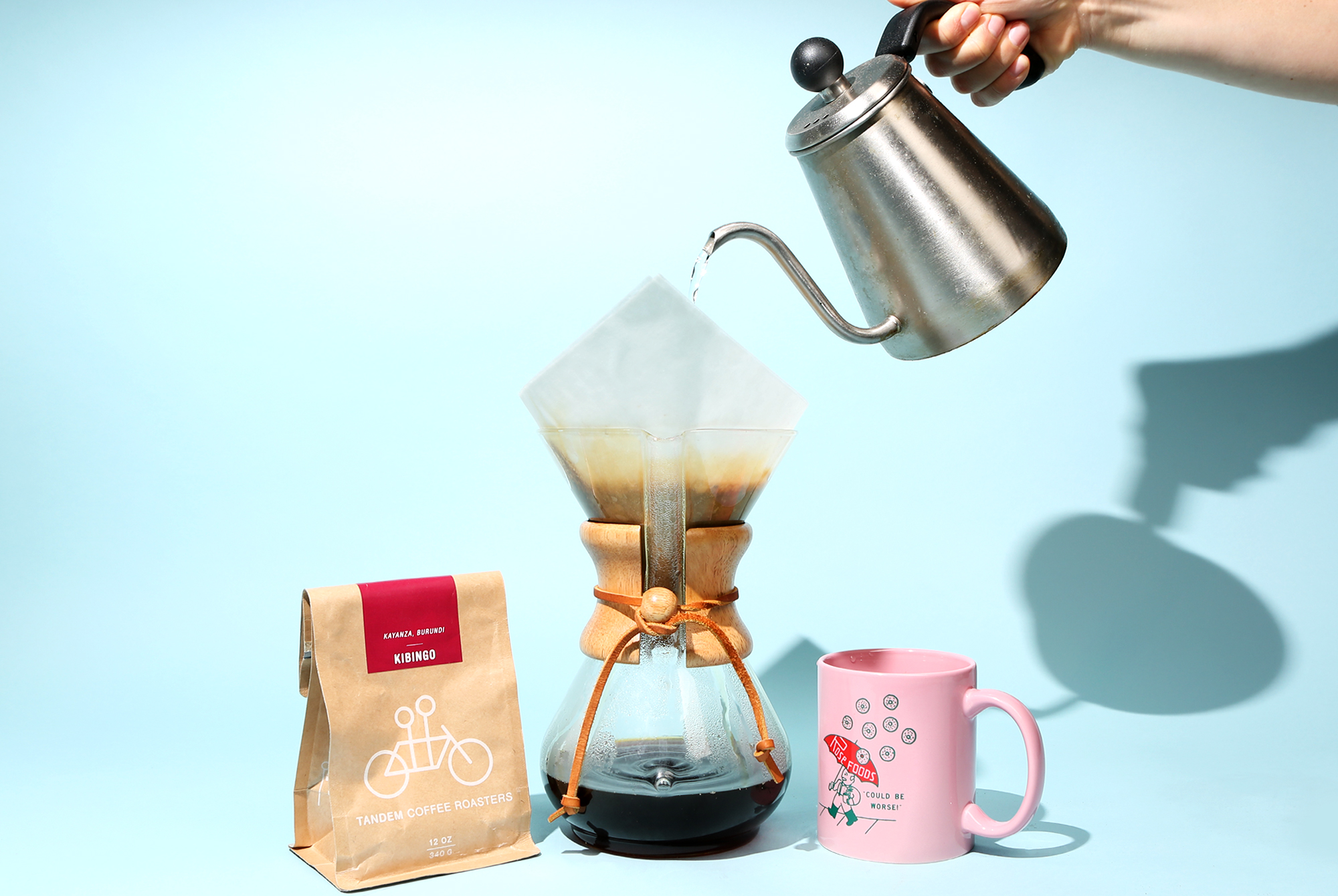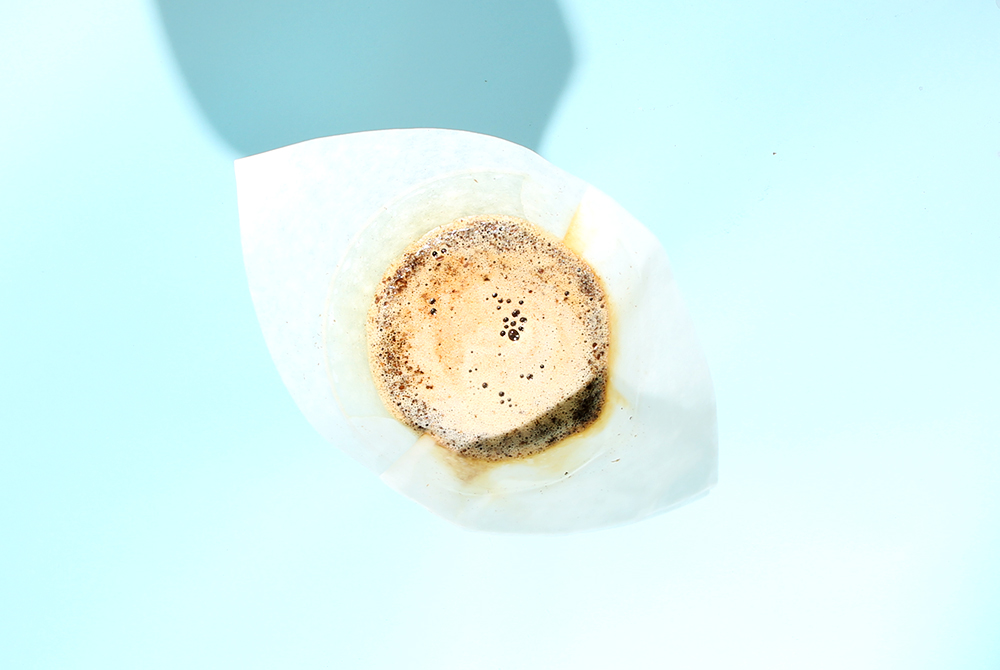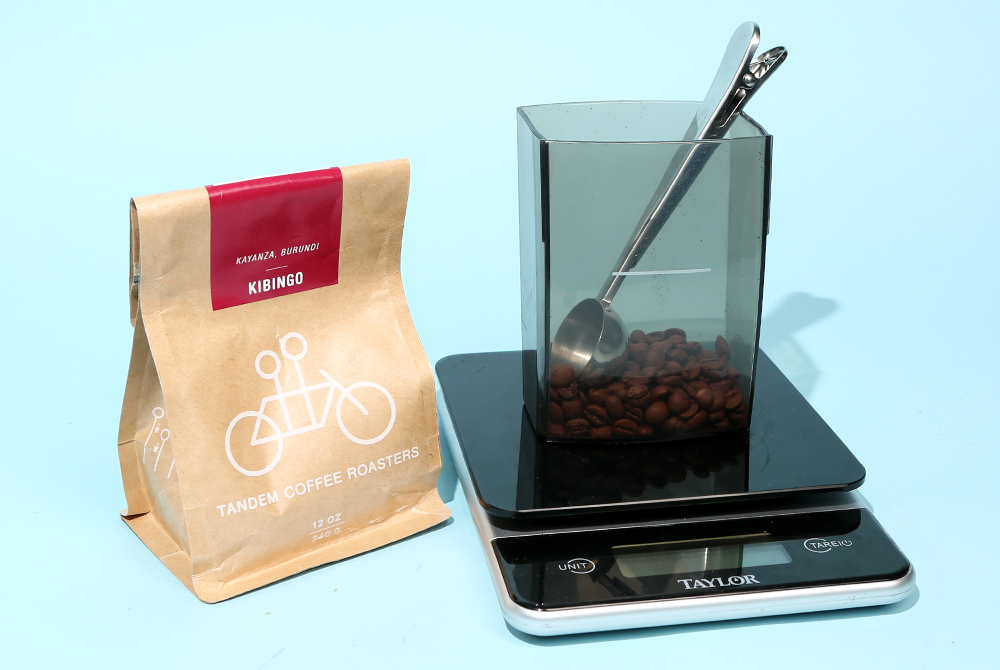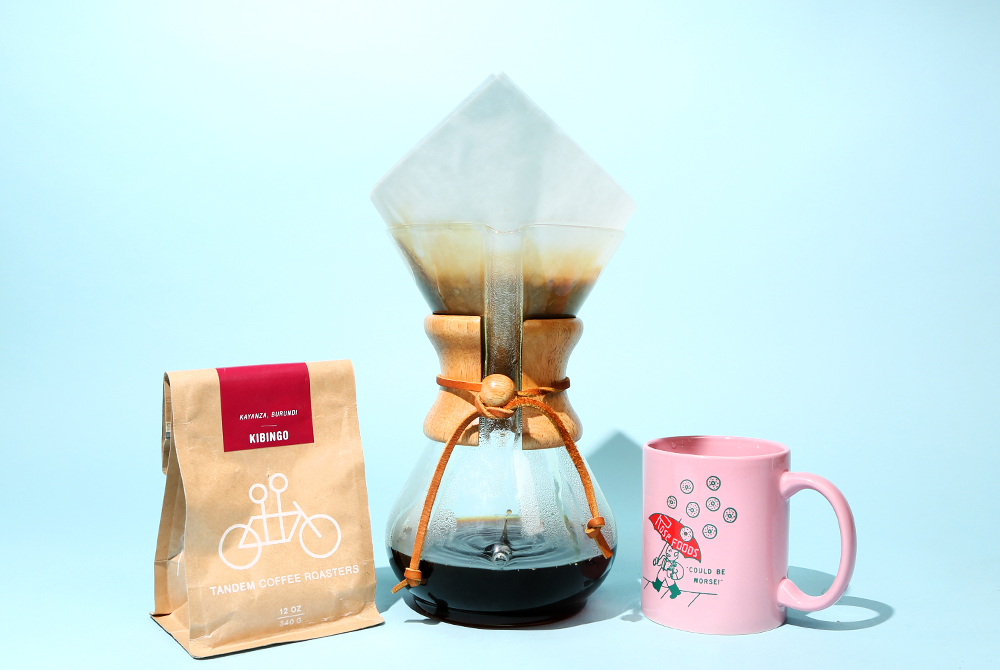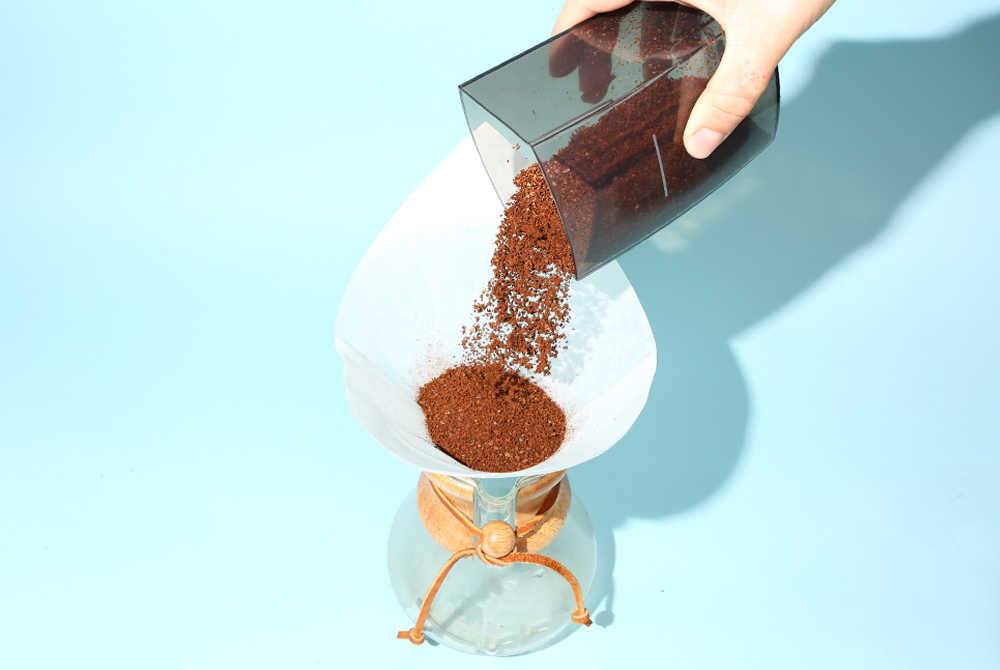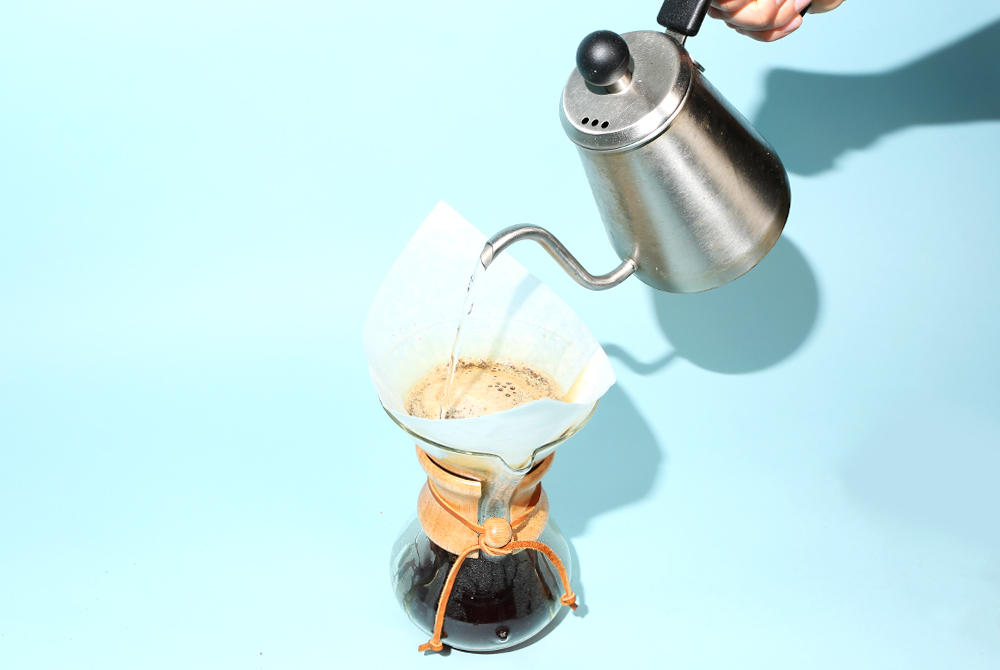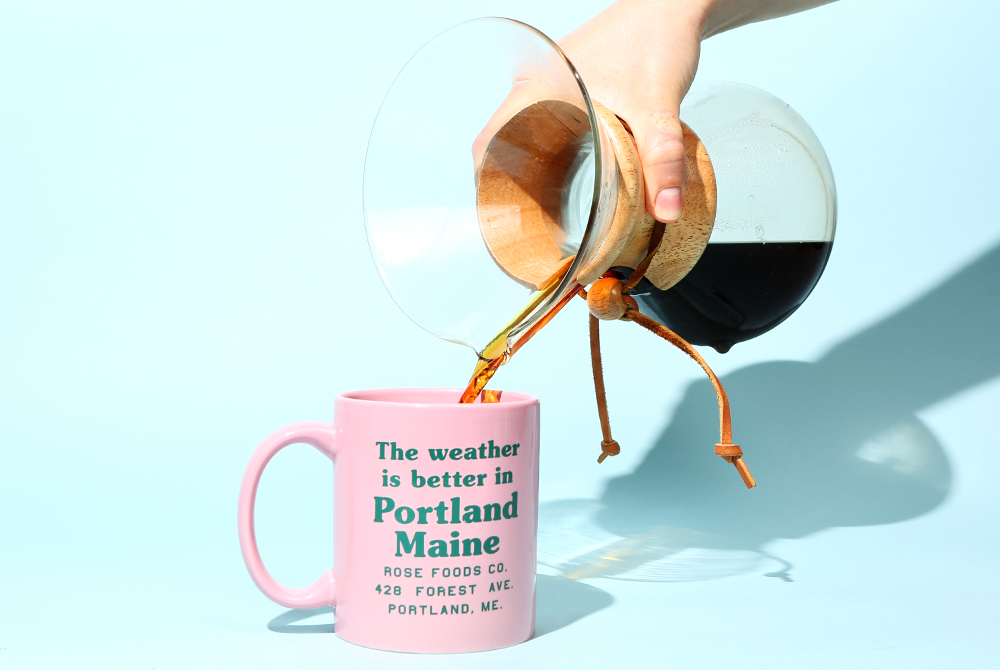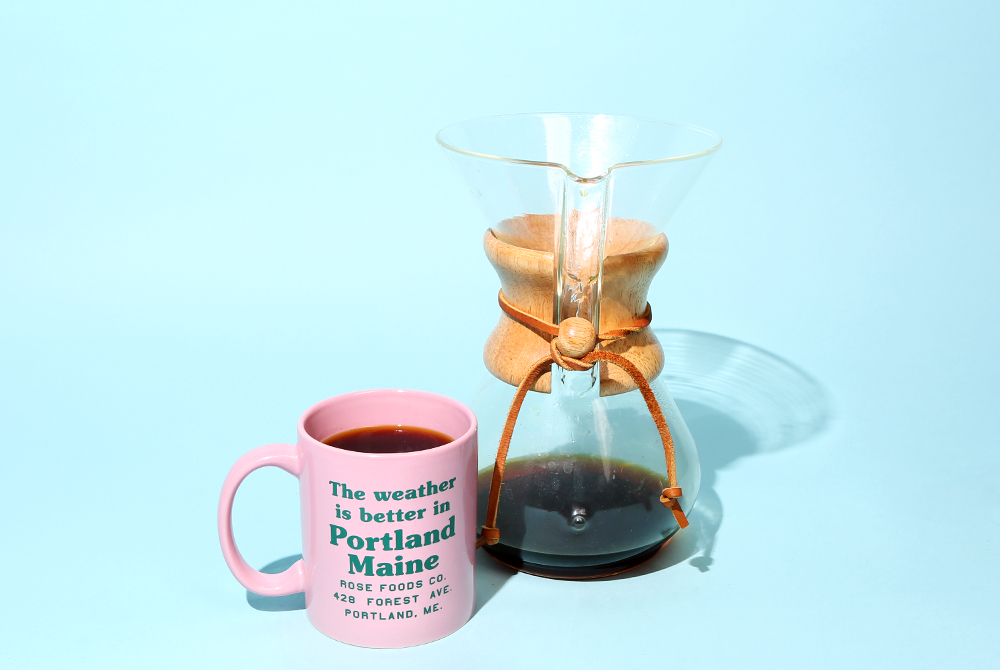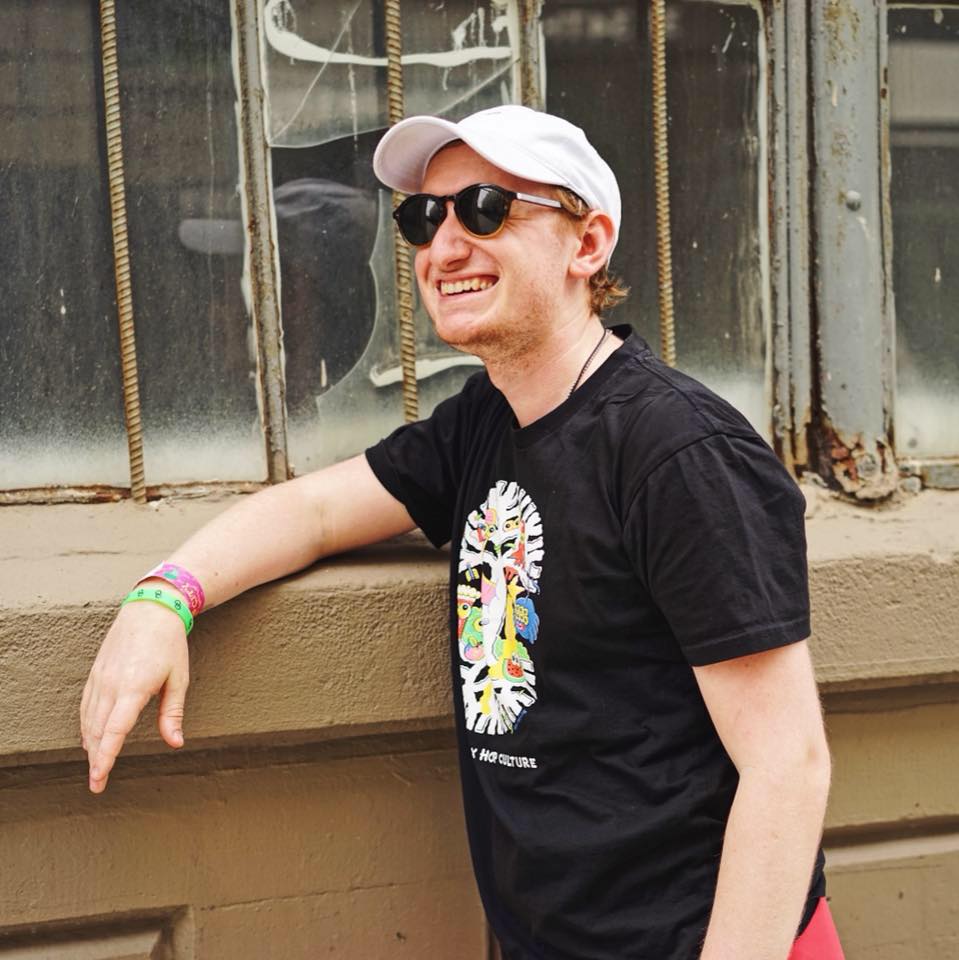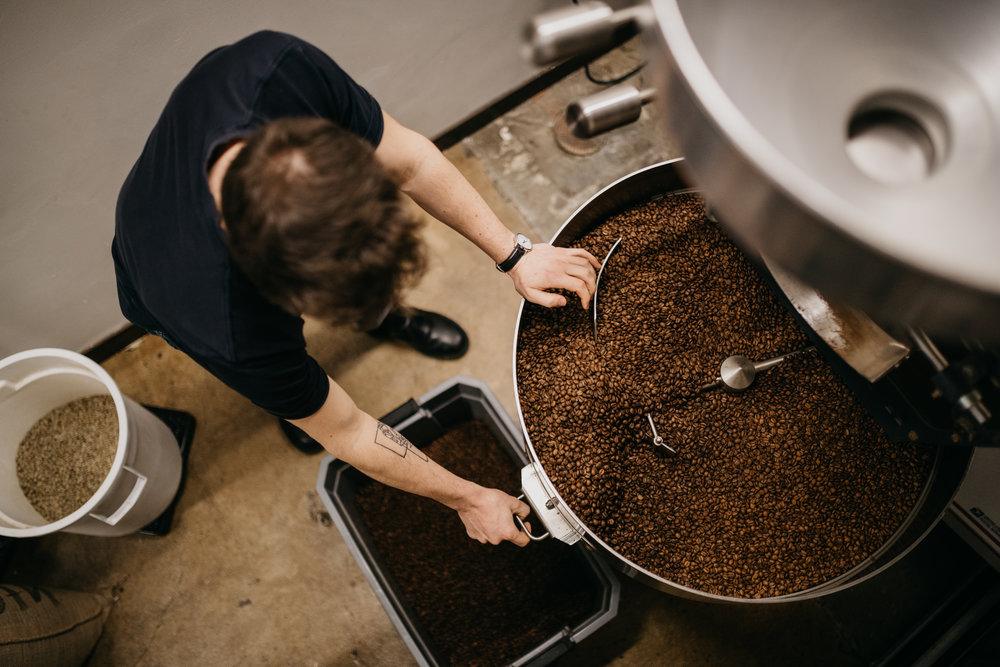Shop
The 5 Minute or Less Chemex Brew Guide
The perfect pour-over every time.
I’ve settled into a pretty consistent routine. And it mostly revolves around beverages.
Coffee in the morning. Beer (or cider or wine or amaro or…) at night. And then–you know–work, exercise, reading, unimportant nonsense in between.
My nighttime beverages are diverse but lately I only brew my coffee one way: Chemex.
First introduced in 1941, the Chemex is both a statement piece and functional appliance; its unique design has stayed relevant through the years and continues to elevate home coffeemaking.
Brewing a cup of pour-over coffee in a Chemex isn’t instantaneous (the whole process might take five to seven minutes), but the end result is a bright, delicious coffee every time. I wouldn’t start my mornings any other way.
What You’ll Need:
Chemex: Obviously you’ll need this. There are a variety of sizes but I recommend the 6-cup.
Filter: The Chemex filters are a bit pricier than your average filter (almost $20 for a pack of 100), but they’re worth it. The bonded paper filters remove the bitter flavors and allow brighter and cleaner notes to pop your in cup of coffee.
Gooseneck Kettle: The Chemex is about precision. Any pour-over method requires a gooseneck kettle, which offers more control in your pour.
Scale: Speaking of precision, you’ll need to weigh out your coffee so investing in a decent kitchen scale is a must.
How to Make Chemex
Measure Your Water and Beans
The best cup of coffee starts with the best coffee (we’d recommend some of these services for online subscriptions). Got your coffee? Great.
Brewing coffee is all about ratios, specifically the ratio of grounds to water. For Chemex, I typically brew a 1:15 (that’s one gram of coffee to every fifteen grams of water), but I’d recommend starting out with a 1:18 for a more even brew.
When I’m brewing a cup for myself, I usually use 35g of coffee and 525g of water (1:15). The end result will be about two mugs. But, feel free to up the dosage to 40 or 50 grams. Just remember to multiply your grains by 15 (or eighteen if you’re using a 1:18 ratio).
I don’t usually pre-measure my water, I simply fill my kettle before heating it and then keep an eye on my scale, but feel free to measure out your water ahead of time.
Heat the Water and Grind the Beans
If you have whole bean coffee (which we prefer for maximum freshness), you’ll need to grind ’em up to about sea salt levels of coarseness. On a Baratza Encore I wouldn’t grind below 20 or above 30. (I like 22 most days.)
Some high-end kettles offer temperature controls, but a rule of thumb is you want water just below boiling (around 200° F). So heat your kettle on your stovetop, let it boil, and take it off the heat for a few seconds.
Rinse Your Filter
This is a key step. The benefit of the bonded paper Chemex filter is that it removes excessive bitterness. But, they’re also ridiculously thick. So, fold out your filter (the triple-fold portion should face the spout) and pour the hot water over the filter for a couple of seconds, fully rinsing it. Pour out the excess water. (I like to pour it in my mug to heat it up a little and then pour it out.)
The Bloom
Place your Chemex on your scale. Pour your coffee in the filter and shake it so relatively flat on top. Tare out your scale. Get your timer app on your phone out and hit start as you slowly pour over the coffee grounds. You’ll want to fully saturate the coffee but you don’t need to go overboard. Wait for the coffee to expand, or “bloom,” which allows for even saturation. Let it sit until you’ve hit 45 seconds on your timer.
The Pour
After 45 or 55 seconds, start pouring again in a circular, steady motion not lingering on any specific area too long. Try to avoid pouring directly on the filter.
You can do this step up until you’ve poured the proper amount of water (In my 1:15 ratio with 35 grams, that’s 525 grams of water) and pausing after every 100 grams of water or so. Either way, most recommend pausing about halfway through to let the coffee drain a bit and then starting again. Or, after you’ve poured half your water, you can use a spoon and swirl the grounds a bit as it drains and then continue pouring to your desired water limit.
Bottom line: The key to a good pour-over is even pouring without hitting the top of the filter. The whole brew should take about four or five minutes. Once you’ve finished tap the sides of the Chemex and discard filter and beans. Pour into your favorite mug.
Enjoy
I mentioned earlier that Chemex is all about precision, but it also welcomes experimentation. Try different grind sizes, ratios, brew techniques. Also, I recommend asking your local roaster what coffee they think will taste best in a Chemex. They’re the experts and can usually suggest optimal beans.
Now, sip your freshly brewed cup of coffee and do whatever it is you do until your next beverage.
Unless otherwise noted, all of the products featured on Hop Culture are independently chosen by our editorial team. However, Hop Culture may earn a commission from purchases made through affiliate links on the site.
Liked this article? Sign up for our newsletter to get the best craft beer writing on the web delivered straight to your inbox.

